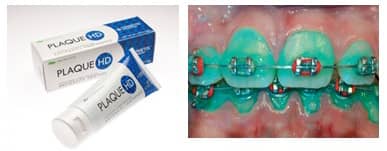by Roger P. Levin, DDS
Referral-based marketing can help orthodontists defy the slow economy
 |
Referrals have always been the backbone of the orthodontic practice. Today, they are more important than ever. We are facing one of the most difficult and sustained economic declines than we have had in many years, and that is having an effect on orthodontic practices. Levin Group data indicates that many orthodontic practices are down 5% to 7% from just 1 year ago.
While slow periods are normally just part of a larger economic cycle, the fact is that our economy is not only changing—it’s changing permanently. True, there will almost certainly be an improvement in some economic sectors. However, gasoline prices, gas and electric costs, and even food costs will remain higher than they were before this downturn began. This means that consumers will become very careful about choosing where they spend their discretionary income. Unlike at any time in recent memory, orthodontics may well be on the “chopping block” for some consumers. However, prudent action can keep orthodontic practices not only surviving but thriving in a slow economic landscape.
How Is the Economy Affecting Your Practice?
As the economy continues to decline, look for the following scenarios in your practice. Every orthodontist is experiencing these situations to some degree:
- fewer patients seeking out orthodontic services until they believe that the economy is improving;
- more patients (adults and children) presenting for consultations but not accepting treatment;
- more patients scheduling treatment but canceling at the last minute or simply not showing up because they cannot afford treatment;
- patients shopping around for orthodontic services more than ever; and
- competing orthodontic practices increasing their marketing efforts to build their net worth.
How can you deal with these negative practice events? The solution may not be what you think.
Can More Patient Referrals Save the Day?
Patient referrals are very important, that’s true. Most orthodontists would prefer to have all of their referrals come from patients. This is no surprise. Patient referrals take less time and effort for the orthodontist.
The only problem with trying to rely exclusively on patient referrals is that patients can refer only a limited number of patients. Before long, you will inevitably limit your practice’s growth potential. While you certainly should pursue patient referrals, you never want to neglect GP referrals.
How do you get more GPs to refer? How do you attract as many top referral sources as you can on an ongoing basis? Inconsistent marketing will not accomplish this goal. An effective referral-based marketing program will.
Why Referral-Based Marketing Is So Important
Referral-based marketing begins when you ask yourself the question, “Who are my customers?” In seminars that I present throughout the country, I direct this question to front desk staff members. Inevitably, the answer comes back, “the patients!” And that is absolutely correct. But orthodontic practices also have another customer who is just as important: referring doctors. And the only way you are effectively going to service that customer is through referral-based marketing.
In the current economy, referral-based marketing is priority 1 for any orthodontist who is serious about building his or her practice. A strong referral-based marketing program has a dramatic impact on boosting practice production and profitability. Referral-based marketing, when properly implemented, is like compound interest. At first, it builds slowly. After 5 to 6 months, when the method is properly followed, the orthodontic practice will begin to see a significant return on investment. Over the course of a 20-year career, referral-based marketing can add millions of dollars of revenue to your practice.
Obviously, it is essential to have excellent management systems that allow your practice to grow and create high levels of efficiency. However, management systems can only do so much. Nothing compares to the value of a consistent referral-based marketing program.
Three Steps to Achieving Highly Effective Referral-Based Marketing
The Levin Group Method for Total Orthodontic Success™ contains three critical components for effective referral-based marketing:
- establish quality relationships with referring dentists;
- implement consistent, repeatable marketing strategies; and
- designate a professional relations coordinator.
The first factor in developing a referral-based marketing program is to create outstanding relationships with the referring dentists and potential referring dentists in your area. A strong patient-referral process also plays an important role in orthodontic success. I recommend segmenting referring doctors into four groups—A, B, C, and D doctors—based on the number of referrals they give:
- A doctors are the top third of referrers, responsible for 40% to 60% of production;
- B’s are the middle third, sending you 20% to 30% of production;
- C’s are the bottom third, responsible for 1% to 10% of production; and
- D’s are nonreferring dentists.
To implement a successful referral-based marketing program, you must understand who is currently referring, at what level, and what potential changes may occur in the near future. Your success depends on knowing the current status of the referral base.
Once you know who’s referring a lot and who’s referring a little, you must implement marketing strategies that retain those A-list referring doctors and encourages B-listers to become A’s.
I recommend using a statistically defined points system to ensure that the right number of strategies is applied to the different segments of the referral base, with A doctors (or doctors you want to turn into A’s) getting the most points. For example:
- 5-point strategies: 30 minutes of one-on-one doctor time with the referral source, lunch-and-learn activities, reviewing and planning a case, visiting the referring doctor’s office.
- 4-point strategies: Group events. Examples include open houses, dinner parties, and seminars.
- 3-point strategies: telephone-based follow-up on cases and giving updates.
- 2-point strategies: staff and doctor parties, staff lunches, education, and gifts.
- 1-point strategies: mailing educational updates every other month, seasonal activities.
Orthodontic Products readers are entitled to receive a 20% courtesy on Levin’s next Total Orthodontic Success Seminar™, being held September 25–26 in Scottsdale, Ariz. To receive this courtesy, call (888) 973-0000 and mention “Orthodontic Products,” or e-mail with “Orthodontic Products” in the subject line.
The first 10 who respond will also receive a free copy of Maximum Success for Orthodontists, Levin’s referral marketing CD.
While all of this may sound overwhelming or almost impossible, it is a relatively easy process that can be handled by one individual: a part-time professional relations coordinator (PRC).
The PRC is the key to running a successful orthodontic marketing program. A person with the right personality, with even a minimal dental background, is all you need. The PRC will conduct marketing activities in your office at least 12 hours per week (or more, depending on the number of orthodontists and offices involved).
The role of the PRC actually combines several jobs, all of which bring a great deal of value to the practice. The main responsibilities typically include:
- helping to design the marketing program by establishing and monitoring calendars, timelines, and deadlines;
- supporting your relationship-management activities with key referring doctors by staying on top of your notes, phone calls, letters, and social engagements;
- handling all the details for announcements, public relations, invitations, and scheduling; and
- serving as your coach by determining, for example, which lunches need to be set up and with which referring doctors.
The PRC function has revolutionized referral-based marketing in the orthodontic practice. Most practices experience peaks and valleys in their marketing efforts, depending on the patient load and time of year. These fluctuations and inconsistencies significantly decrease the effectiveness of marketing programs and can be eliminated when you delegate these important objectives to a PRC dedicated to marketing and ensuring that everything is done well, on time, and on budget. Your PRC will create revenue and add value to your practice by carrying out critical marketing functions and taking pressure off the orthodontist.
Overcoming Economic Challenges
|
To read more articles by Roger P. Levin, in our free online archives. |
The economy is challenging—there are no two ways about it. To offset its negative effects, you must embrace referral-based marketing. Simply put, referral-based marketing is the single most important activity for achieving greater orthodontic success in an underperforming economy.
In my 23 years of experience consulting to thousands of orthodontic practices, I have found that offices that implement strong referral-based marketing programs consistently outperform all others. And when I say outperform, I’m talking about a $10 to $12 million increase in practice revenue over a 20-year period. In today’s down economy, this should be music to every orthodontist’s ears.
Roger P. Levin, DDS, a third-generation dentist, is founder and CEO of Levin Group Inc. For more than 2 decades, Levin has been dedicated to improving the lives of orthodontists. He can be reached via e-mail at










